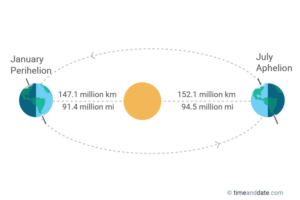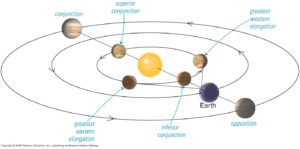Human blood is a testament to life’s origin in the OCEAN: its chemical composition is nearly identical to that of sea-water
OCEAN HABITATS
Click here to tour the ocean.
ऋषि उवाच
1. ok
2. कोणे नता पृथ्वी मुख्य कारणं । सूर्यात दूरी समुद्रः च गौण।
To discuss or suggest more experiments, LOG IN here.
MINERALS INSIDE OCEANS
Have
To understand in detail
For Learners:
DIYHA (do it yourself home activity):
BIO LUMINISCENCE
A chemical process which allows living beings to produce light
1. Click here to know the process
Visit
ऋषि उवाच
1. ok
2. कोणे नता
LEARNINGS FROM THE EXTREME MARINE LIFE
Do you know
1. The immortal Jelly Fish
http
http
3. How do Elephant seals dive down upto 2 km?
http
4. Can the antifreeze protein in the Patagonian toothfish save humans from frostbite?
http
5. How does Megamouth Shark survive hypoxia and frostbite at a depth of 4.5 km under the sea?
http


LOCATING STARS WITH R.A COORDINATES
LEADING ARTICLES
Do you know
1. Only 1/5th of the Ocean floor mapped by humans so far
When the Nippon Foundation-GEBCO Seabed 2030 Project was launched in 2017, only 6% of the global ocean bottom had been surveyed to what might be called modern standards.
That number now stands at 19%, up from 15% in just the last year. Some 14.5 million sq km of new bathymetric (depth) data was included in the GEBCO grid in 2019 – an area equivalent to almost twice that of Australia.
2. Did you know…? Marine Life / Ocean Facts…
Sharks bite roughly 70 people each year worldwide, with perhaps 5-10 fatalities, according to data compiled in the International Shark Attack File (ISAF). Although shark bites get a lot of attention, this is far less than the number of people injured each year by elephants, bees, crocodiles, lightning or many other natural dangers. On the other side of the ledger, we kill somewhere between 20-100 million sharks every year through fishing activities.
Of the more than 500 or so shark species, about 80% grow to less than 1.6 m and are unable to hurt people or rarely encounter people. Only 32 species have been documented in biting humans, and an additional 36 species are considered potentially dangerous.
3. Lunar
ok
4. GEBCO-NF Alumni robots win ocean-mapping XPRIZE
A robotic boat and submersible have won the XPRIZE to find the best new technologies to map the seafloor.
The surface and underwater combo demonstrated their capabilities in a timed test in the Mediterranean, surveying depths down to 4km.
Put together by the international GEBCO-NF Alumni team, the autonomous duo are likely now to play a role in meeting the “Seabed 2030” challenge.
This aims to have Earth’s ocean floor fully mapped to a high standard.
5. Antarctica’s A-68: Is the world’s biggest iceberg about to break up?
The world’s biggest iceberg, A-68, just got a little smaller.
At around 5,100 sq km, the behemoth has been the largest free-floating block of ice in Antarctica since it broke away from the continent in July 2017.
But on Thursday, it dropped a sizeable chunk measuring about 175 sq km.
The iceberg is currently moving north from the Antarctic Peninsula. Having entered rougher, warmer waters – it is now riding currents that should take it towards the South Atlantic.
Prof Adrian Luckman, who’s been following A-68’s progress, said the new fracture could mark the beginning of the end of this icy giant.
6. Light trapping fish:
The particles of pigment in their skin are just the right size and shape to side-scatter any light they don’t absorb.
These pigment particles are arranged in a densely-packed, thin layer. So instead of bouncing the light back out, they scatter it back into the layer – it’s a light trap.
The discovery, described in the journal Current Biology, could provide the basis for new ultra-black materials, such as coatings for the interior of telescopes or cameras.
QUIZ
Each of the following questions has four answer options: a, b, c, d. Choose the correct one.
1. If you are situated anywhere at the Tropic of Cancer then your shadow can never point in this direction:
(a) North
(b) East
(c) South
(d) West
2. Consider the
